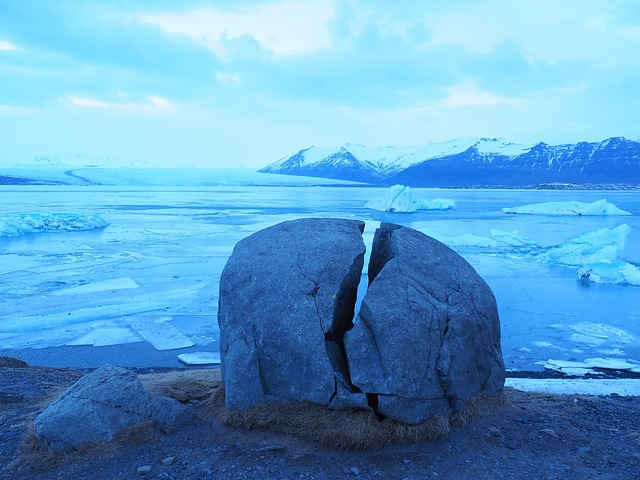For decades, the phenomenon of frost blister—known in Hungarian as jégduzzadás—has been a subtle but persistent reminder that even the coldest parts of the planet are not immune to the shifting climate. Frost blister, or ice blister, forms when liquid water freezes on plant surfaces, expanding and creating blistered patches that can damage leaves, buds, and stems. While the condition itself has long been studied by botanists and horticulturalists, recent research suggests that the frequency and severity of jégduzzadás events are linked to broader patterns of global warming, especially the increasingly erratic winter temperatures that characterize many regions today.
Understanding the Physics Behind jégduzzadás
When ambient temperatures drop below freezing, water within plant tissues can freeze. The expansion of ice exerts pressure on the surrounding cell walls, creating micro‑blisters. If the temperature remains low enough, the blisters can grow large enough to rupture the epidermis, leading to visible lesions on leaves and buds. The process is more likely when there is a rapid transition from sub‑freezing to slightly warmer temperatures, as the water inside the plant begins to refreeze, trapping air and exacerbating the pressure.
- Freezing point of water: 0 °C (32 °F)
- Expansion upon freezing: 9 % increase in volume
- Typical plant tolerance: varies with species, age, and acclimation
Climate Change and the Paradox of Colder Events
Global warming is widely associated with increased heat and higher sea levels, yet it also introduces greater temperature volatility. Warmer winters mean that the atmospheric boundary layer contains more moisture, and when temperatures fall sharply, this moisture can condense and freeze on plant surfaces. In many mid‑latitude regions, the last decade has seen an uptick in such “cold snaps” that are both intense and brief. Consequently, jégduzzadás has emerged as a diagnostic tool for scientists studying the complex ways in which a warming world can generate localized cold damage.
“The paradox of more freezing damage in a warming world illustrates how climate change is not simply a story of higher temperatures, but of increased extremes,” says Dr. Éva Németh, a climatologist who has monitored winter weather patterns across Hungary.
Impacts on Plant Communities and Ecosystems
Repeated frost blister events can have cumulative effects on plant health. Even if individual blisters are minor, the stress on photosynthetic tissues and the subsequent loss of water transport capacity can reduce growth rates. Over multiple seasons, this can lead to changes in species composition, as more frost‑sensitive species decline in favor of those with better cold acclimation or frost tolerance. Such shifts can ripple through food webs, affecting herbivores, pollinators, and ultimately the entire ecosystem.
- Reduced photosynthetic area → lower biomass accumulation
- Altered phenology → mismatches between plant flowering times and pollinator activity
- Changes in canopy structure → impacts on understory light and moisture regimes
Human Health, Agriculture, and Urban Planning
Beyond ecological consequences, frost blister events affect human livelihoods. In agricultural settings, frost blister can damage fruit crops such as apples and cherries, leading to financial losses for farmers who must adjust planting schedules or adopt protective measures. In urban parks and ornamental landscapes, the aesthetic value of trees and shrubs is diminished, prompting increased maintenance costs. Moreover, when blisters rupture and the plant tissue is exposed to wind and rain, the likelihood of secondary infections rises, complicating recovery efforts.
Adaptation Strategies for Plant Systems
Researchers and horticulturists are exploring several practical measures to reduce the impact of jégduzzadás on vulnerable species. These include selecting cultivars with higher frost tolerance, timing planting to allow plants to acclimate, and employing protective mulches or covers during anticipated cold snaps. Additionally, monitoring atmospheric moisture levels can help predict the likelihood of frost blister formation, enabling timely intervention.
- Use of cold‑resistant rootstocks in fruit trees
- Application of hydrophobic sprays to reduce surface water accumulation
- Installation of windbreaks in exposed orchards
Policy and Community Engagement
At a policy level, the emerging evidence linking jégduzzadás frequency to broader climatic changes calls for integrated climate adaptation frameworks. Municipal governments can support local farmers by offering subsidies for frost‑protective technologies, while regional environmental agencies can fund research into plant resilience. Community education campaigns are also essential; informing residents about the signs of frost blister and the importance of early detection can reduce the long‑term damage to both natural and cultivated vegetation.
The Broader Significance of Frost Blister as a Climate Indicator
While jégduzzadás is often perceived as a niche botanical concern, it provides valuable insights into the subtle ways climate change manifests. Frost blister illustrates that warming does not uniformly reduce cold temperatures; instead, it reshapes the distribution and intensity of cold extremes. For scientists, the occurrence of frost blister is a concrete, observable phenomenon that can be measured and tracked over time, serving as a proxy for studying the complex interplay between temperature, humidity, and plant physiology.
Looking Ahead: Research Directions and Hope
Future research will likely focus on genetic markers that confer frost resilience, enabling breeding programs to produce plant varieties better suited to the new climate regime. Advances in remote sensing could also facilitate large‑scale monitoring of frost blister patterns, providing real‑time data to farmers and policymakers. In parallel, global efforts to mitigate greenhouse gas emissions remain crucial; reducing the rate of temperature increase will temper the volatility that leads to extreme cold events.
Conclusion
Frost blister—or jégduzzadás—stands as a silent sentinel of a world in flux. It reminds us that climate change operates through a spectrum of temperature extremes, not just heat waves and rising seas. By paying close attention to this phenomenon, scientists, farmers, and communities can better anticipate and respond to the shifting patterns that threaten both natural ecosystems and human economies. The story of frost blister underscores the importance of holistic climate stewardship, combining rigorous scientific inquiry, adaptive management practices, and robust policy frameworks to safeguard our planet’s fragile balance.


